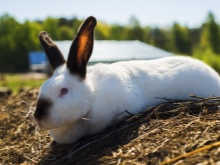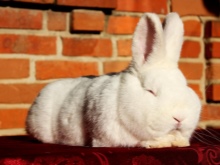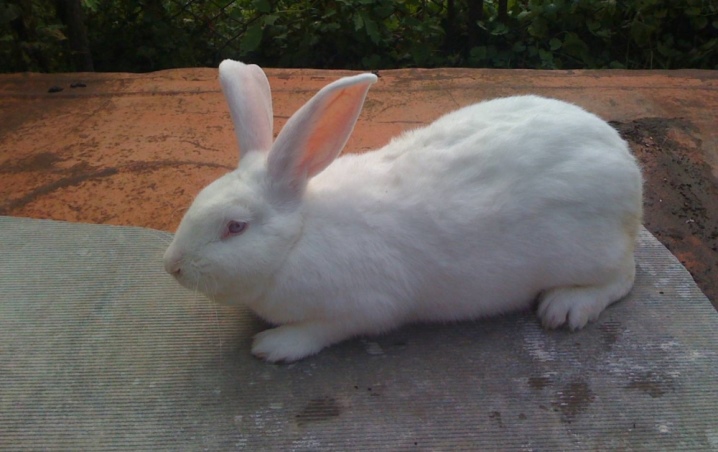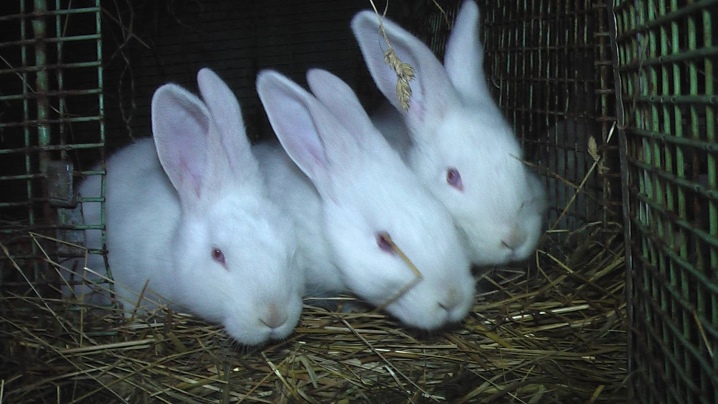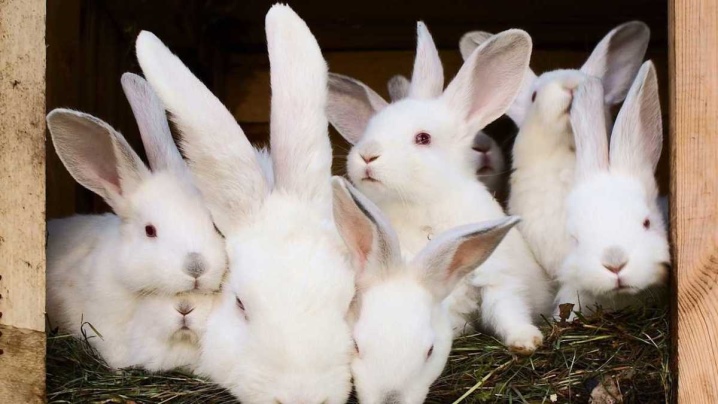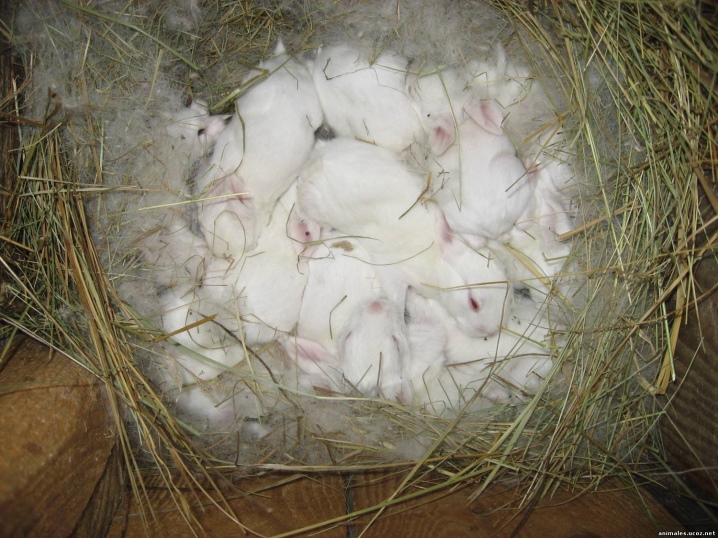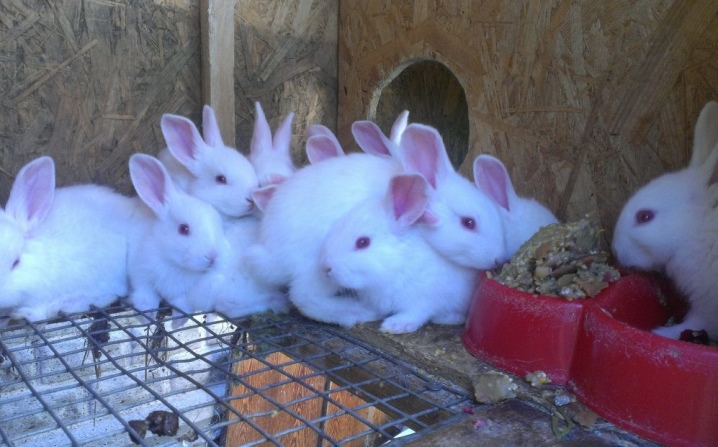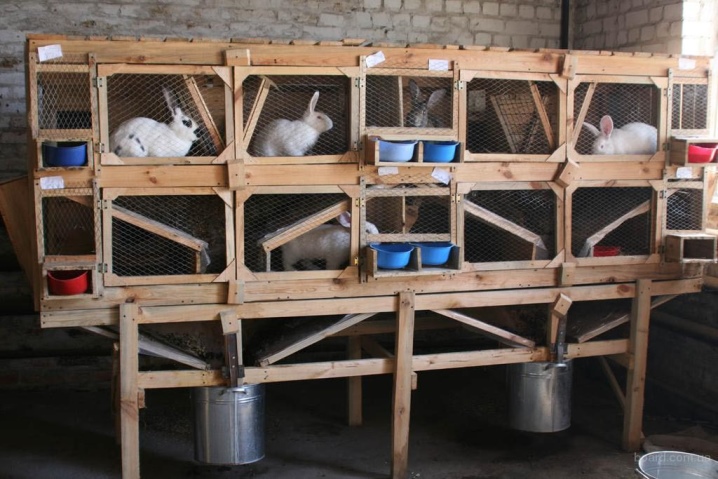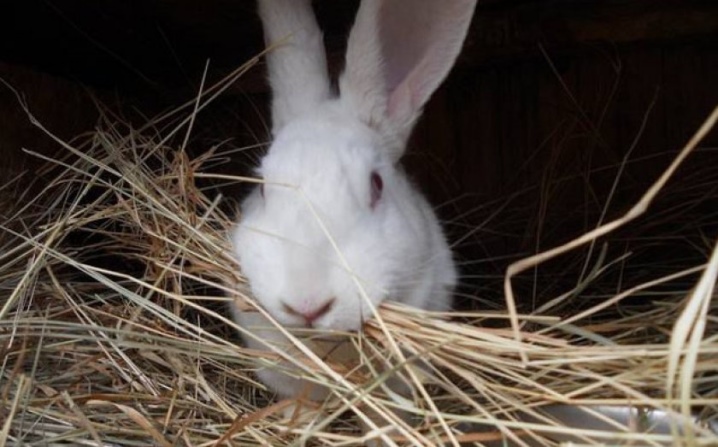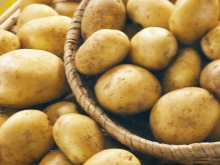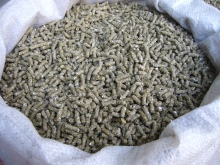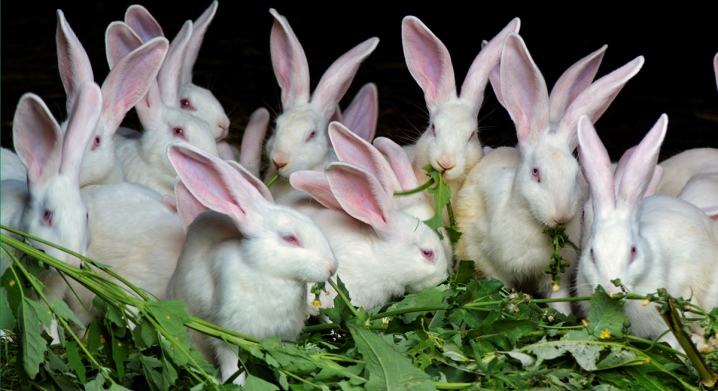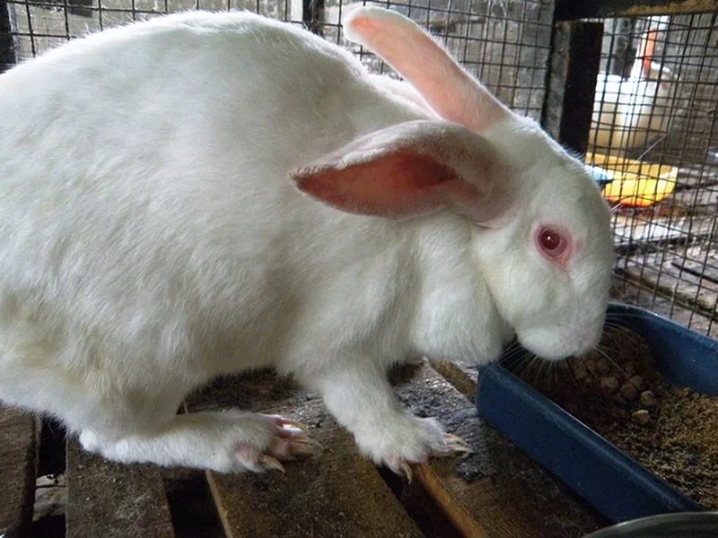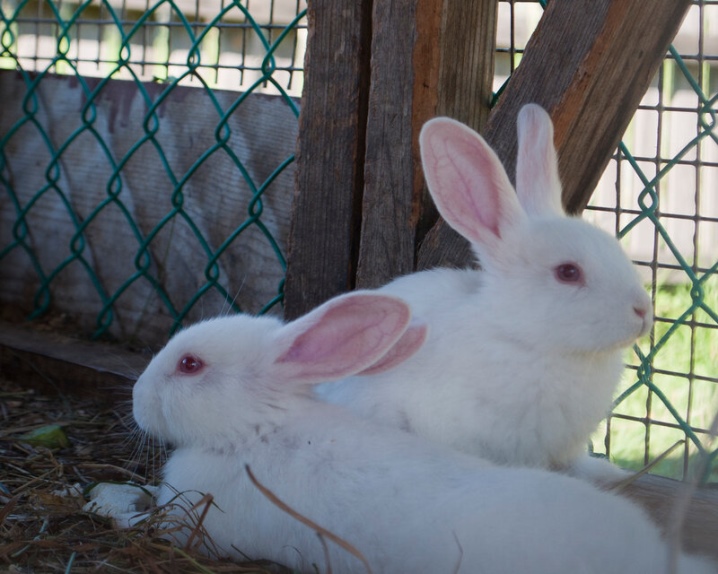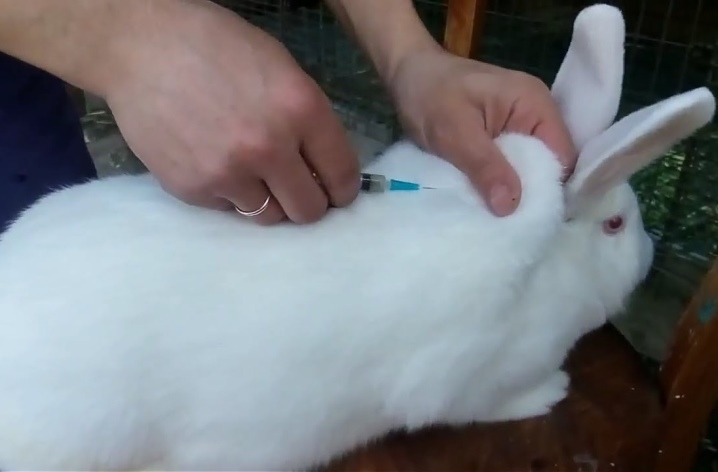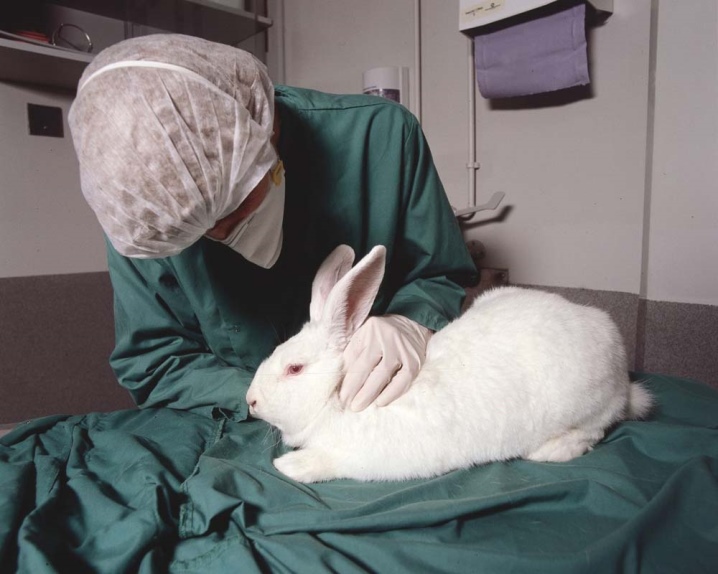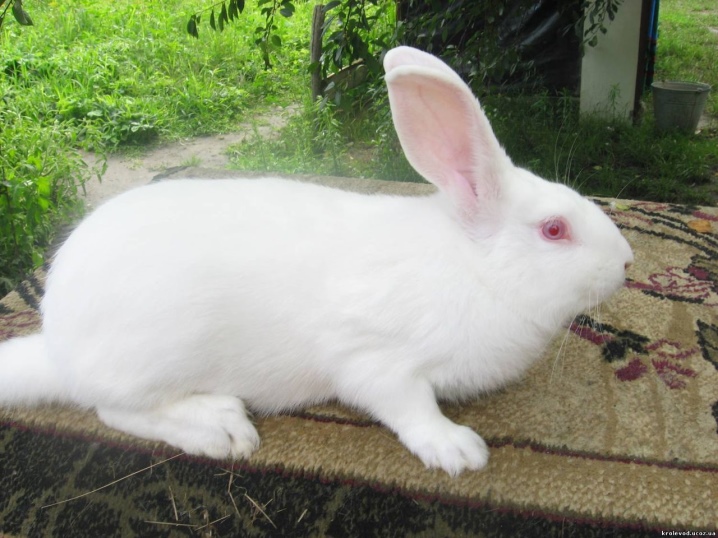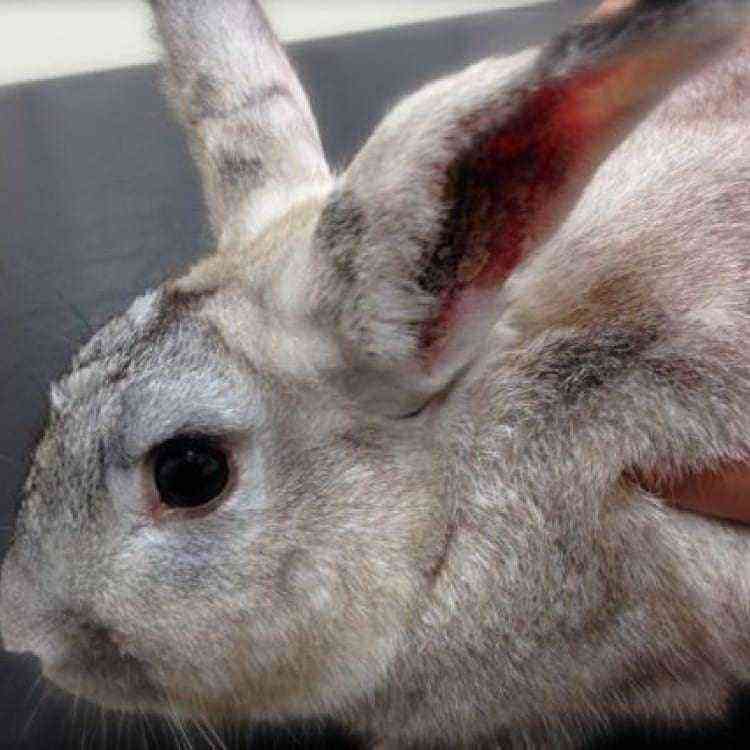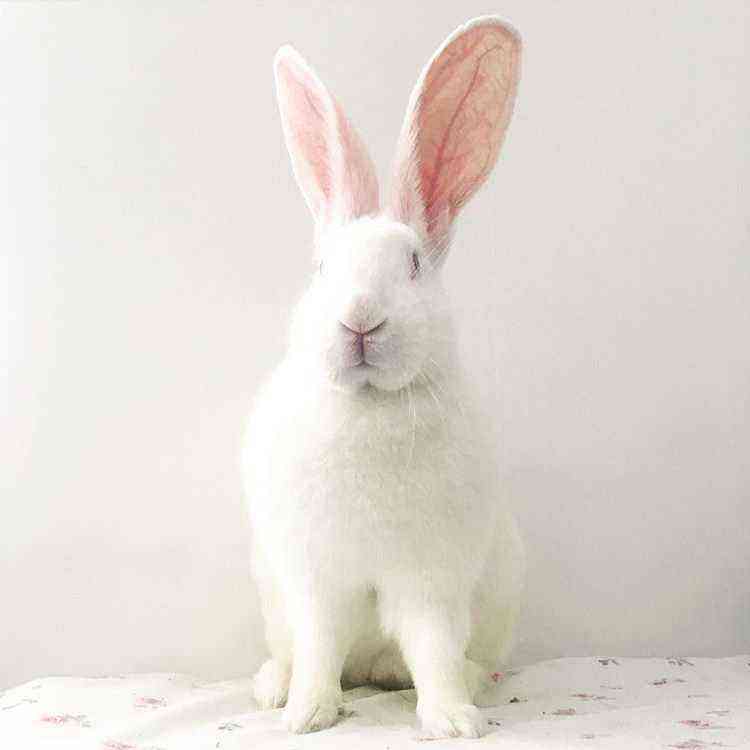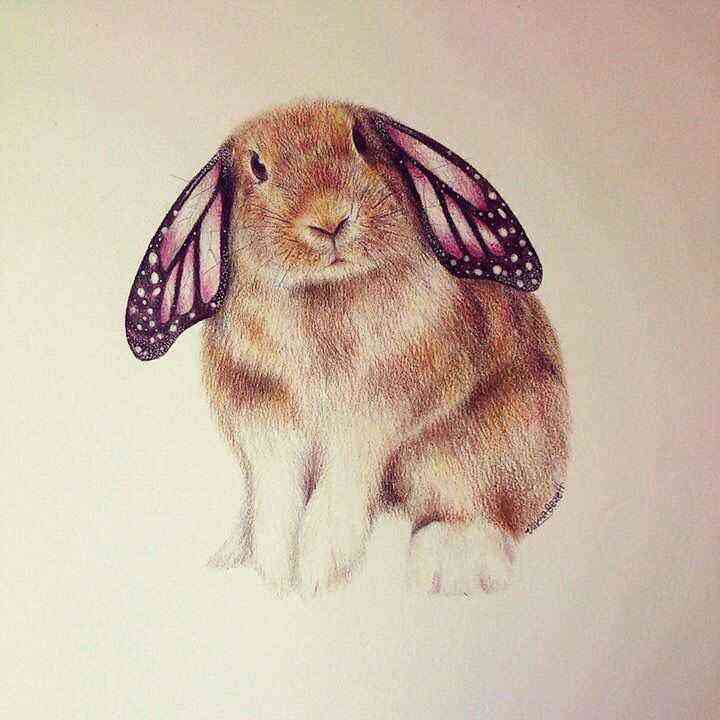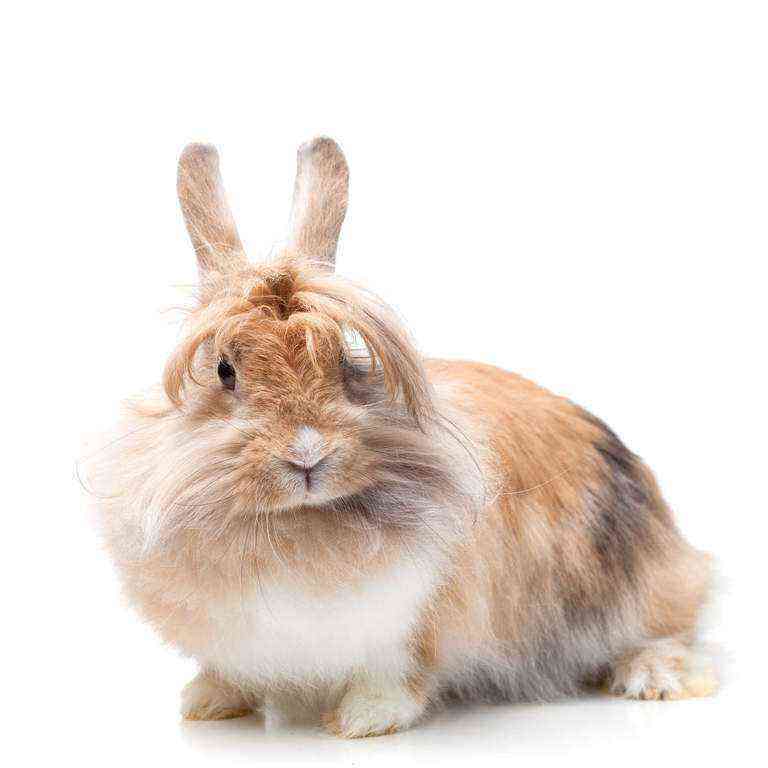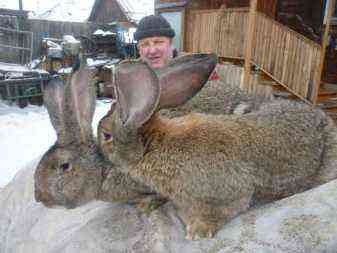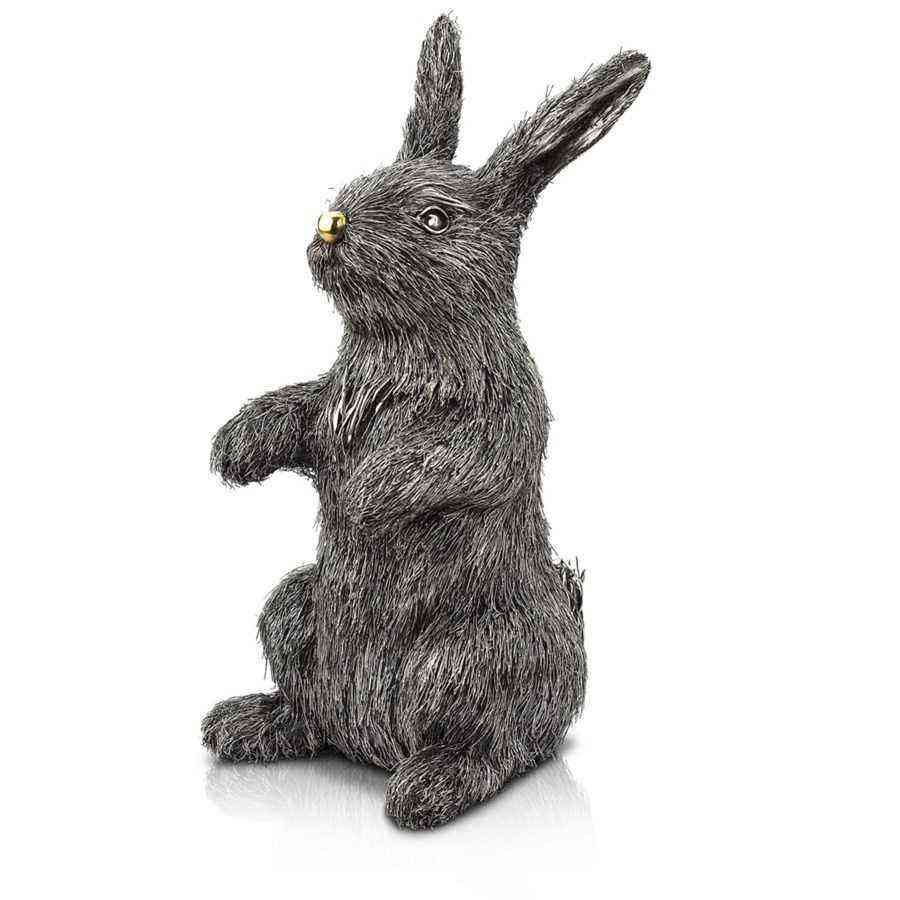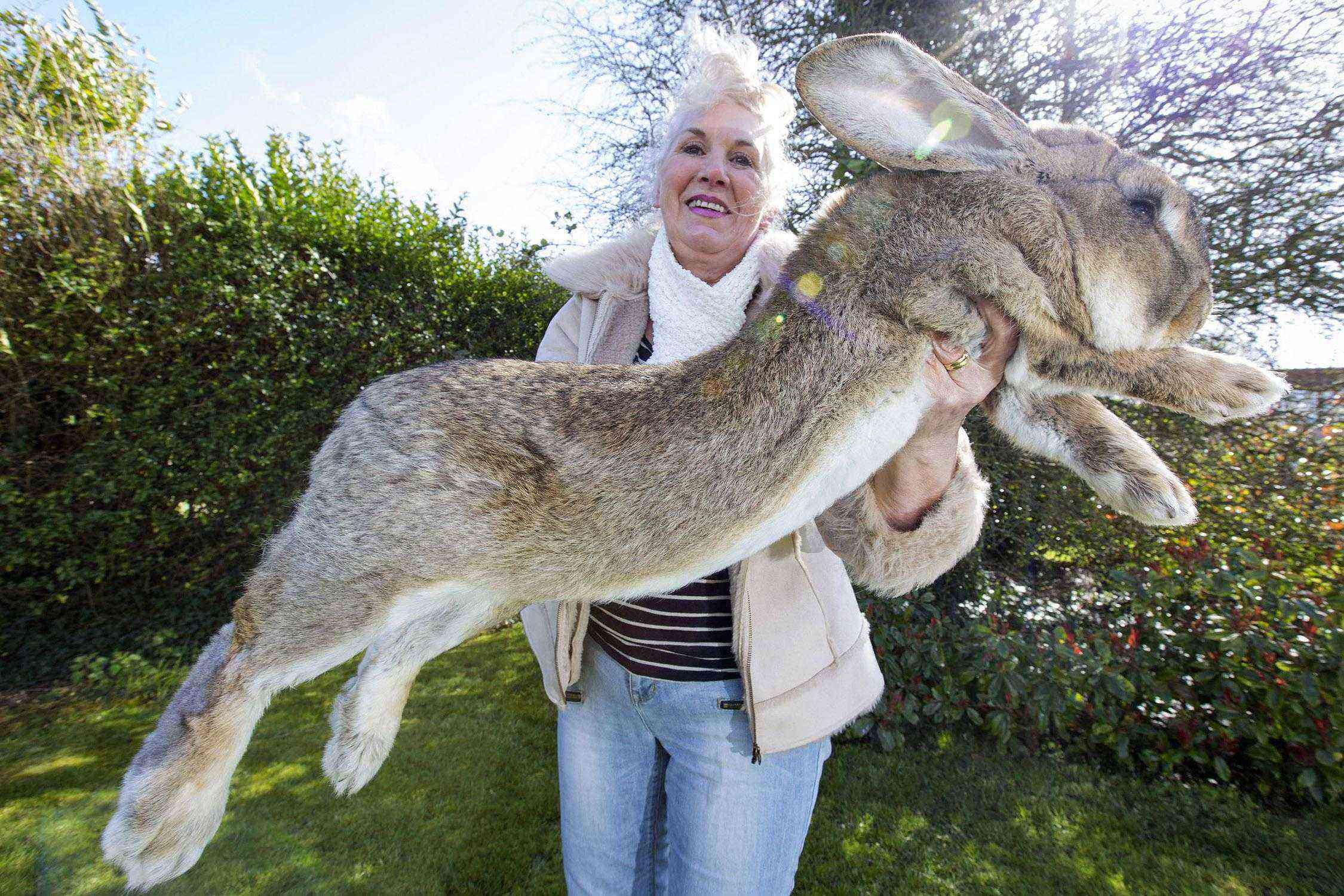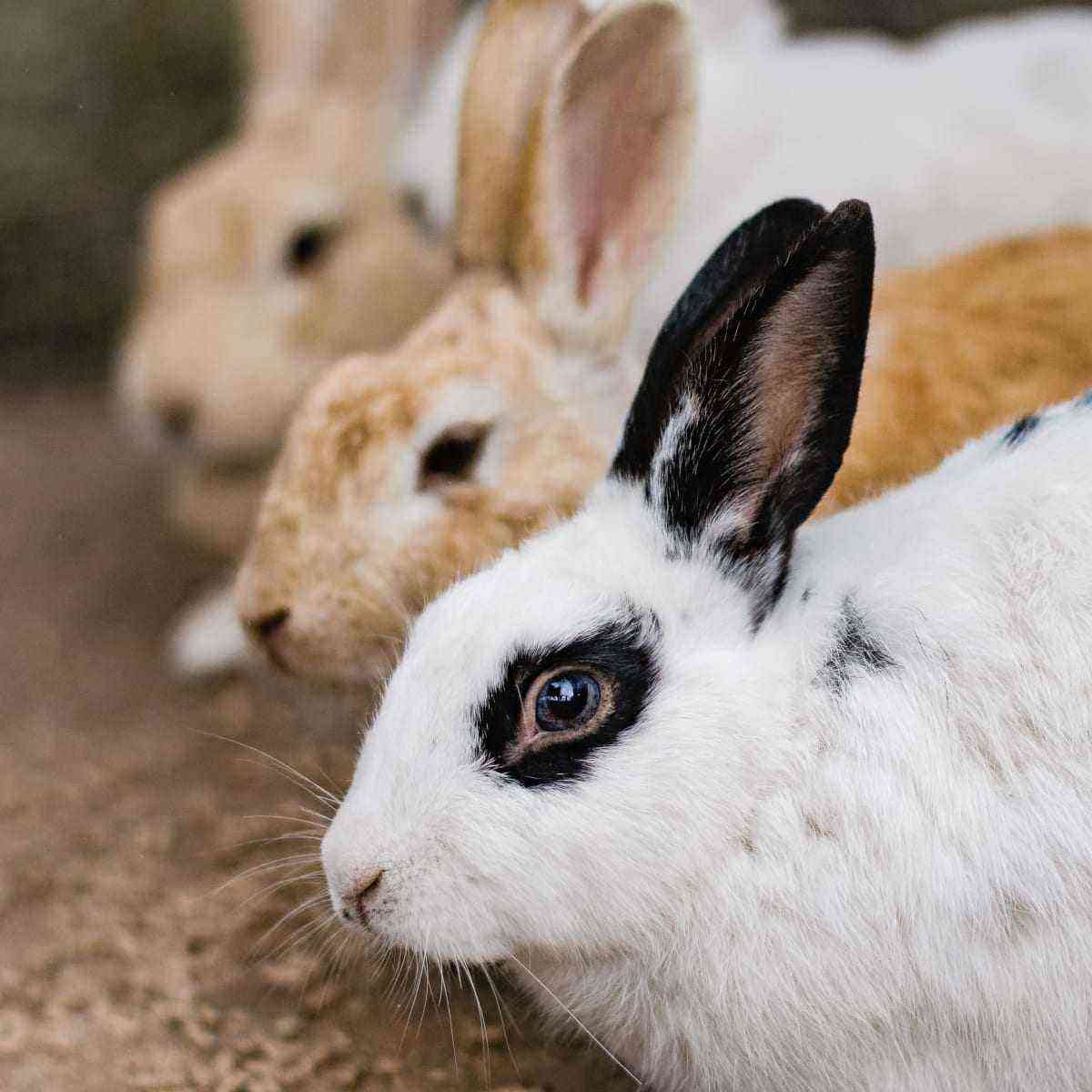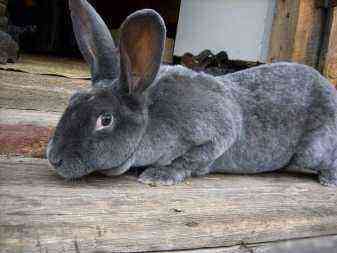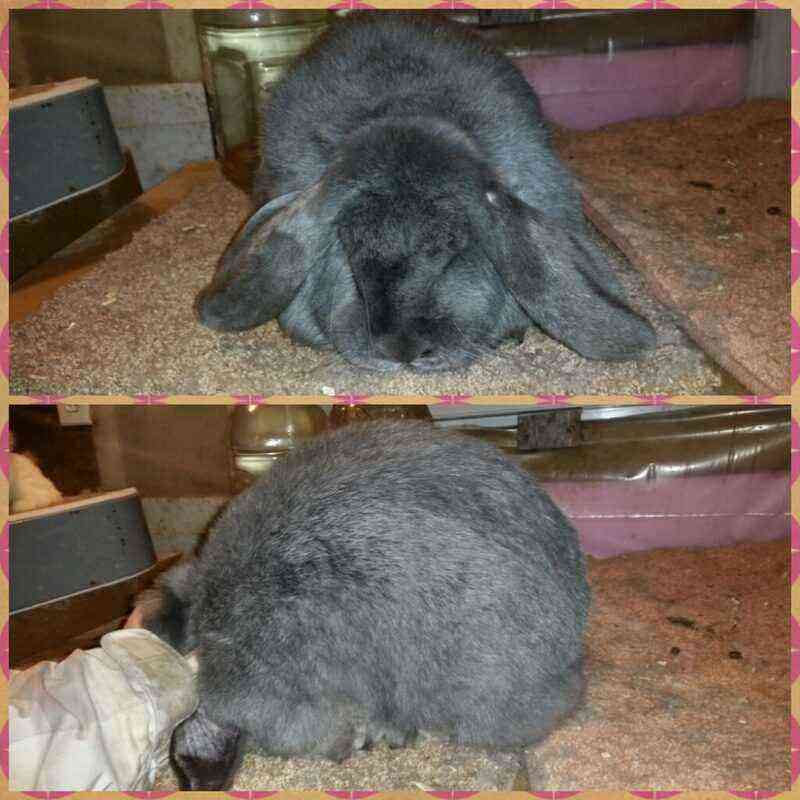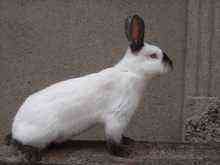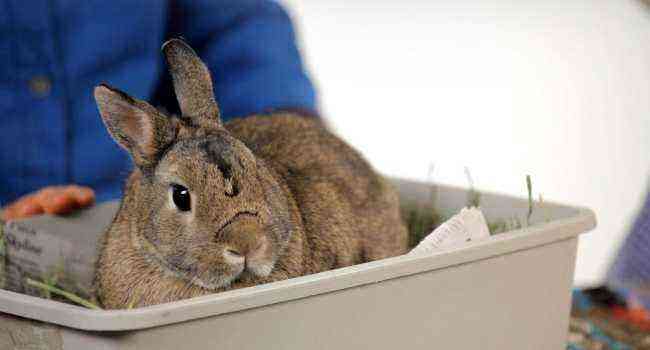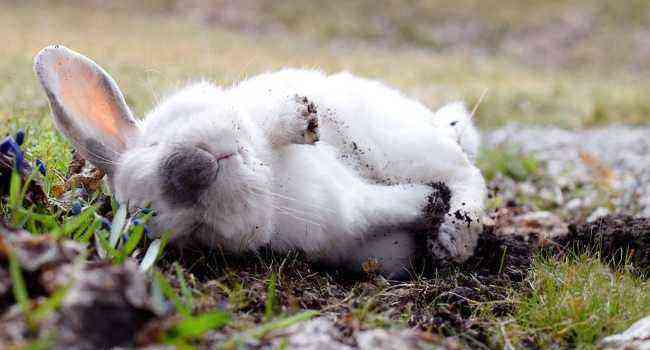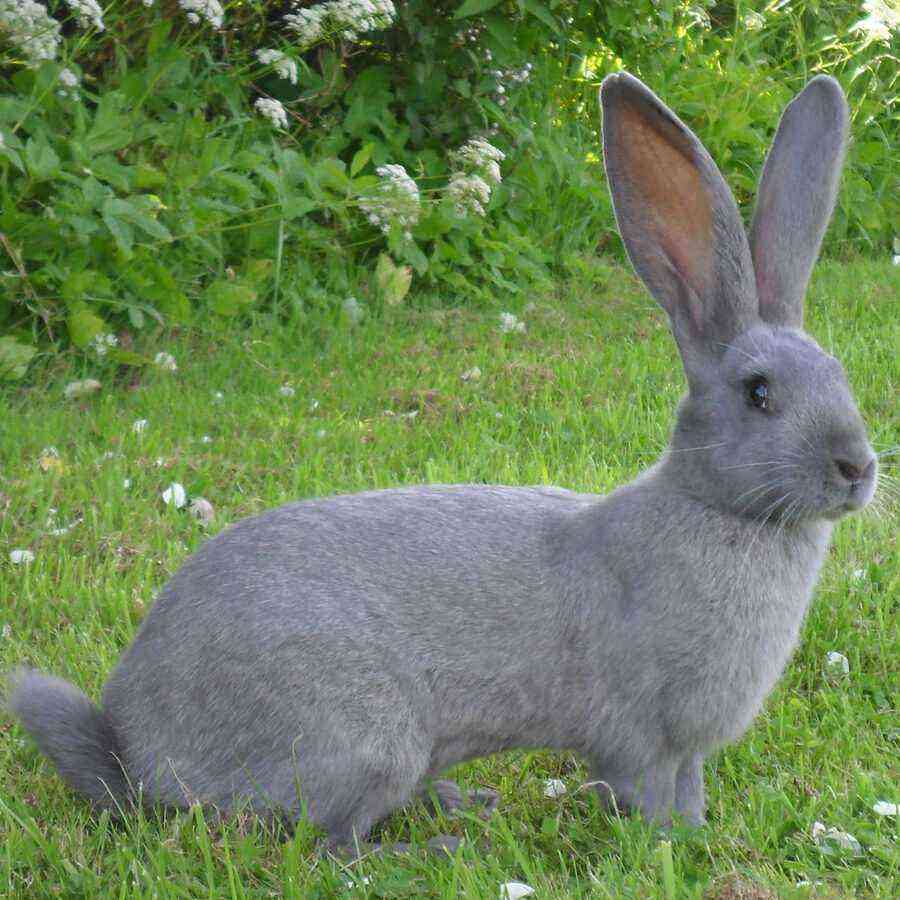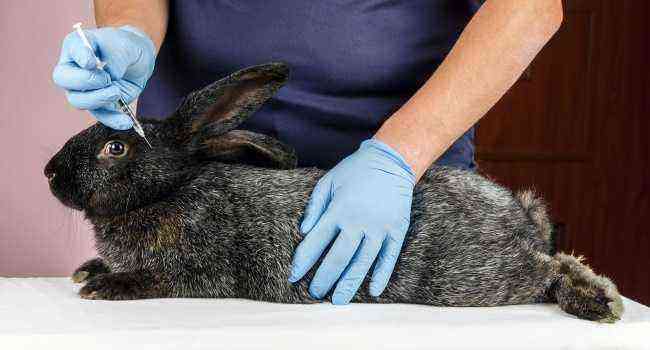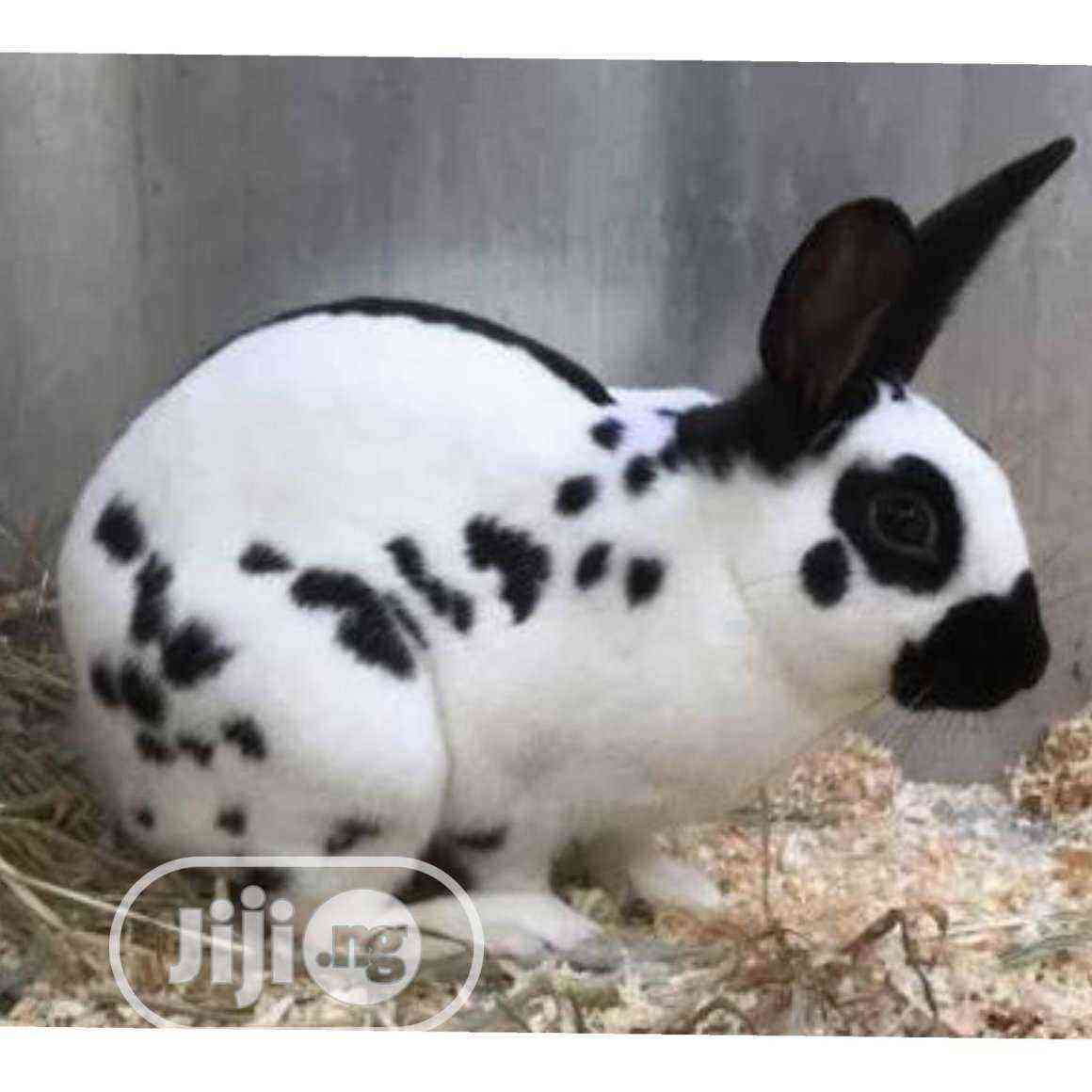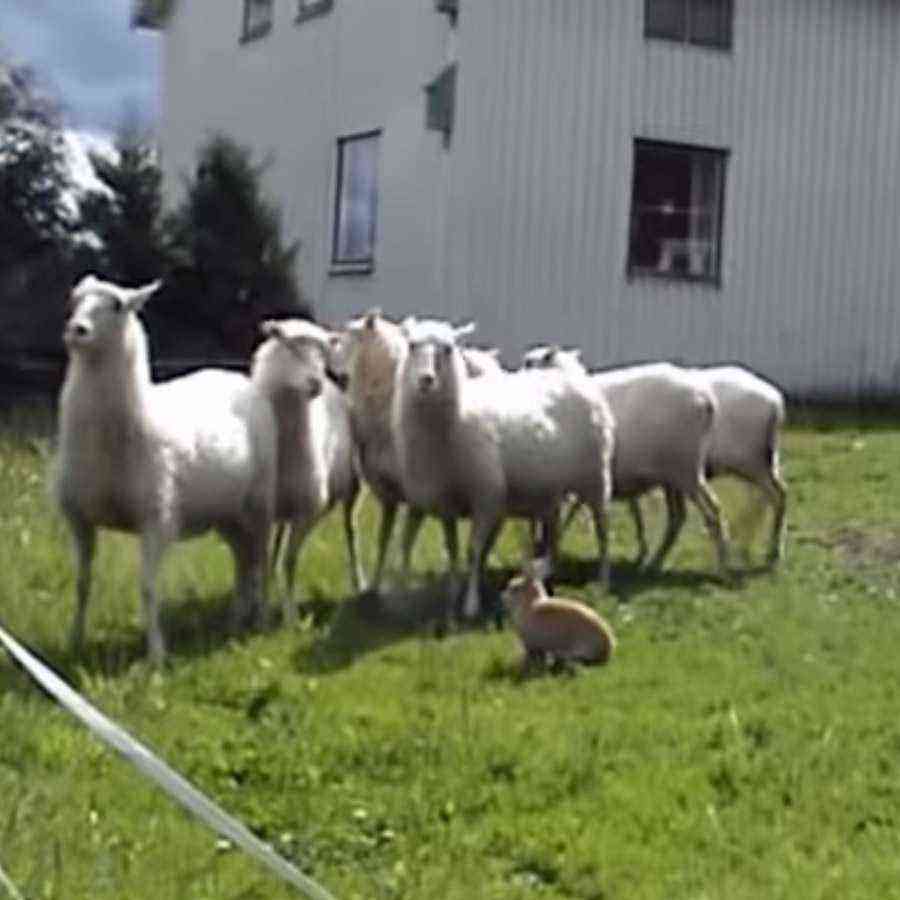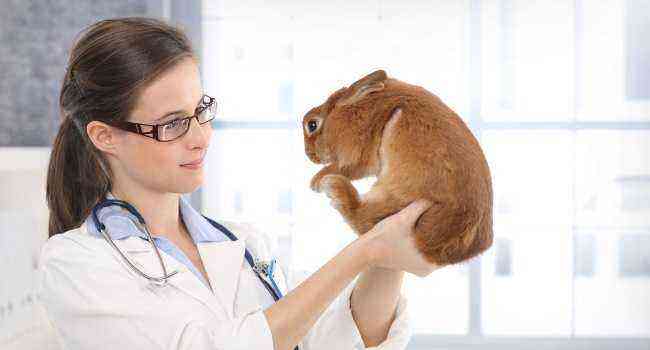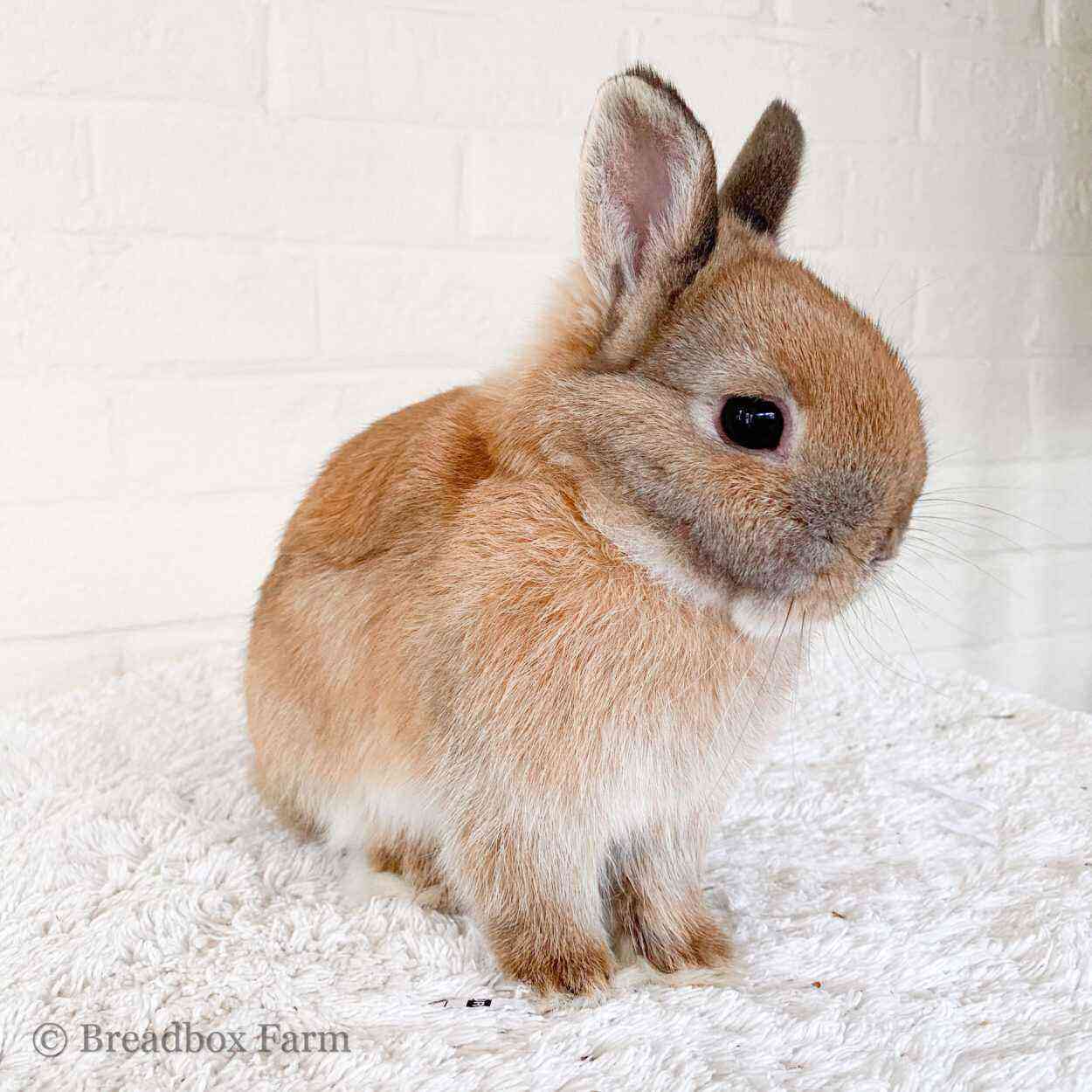Breeding rabbits does not require large expenses, and on a farm scale it also quickly pays for maintenance costs. There are about two hundred breeds of rabbits, among them there is a fairly young breed that was created for the meat direction – the Pannon breed.
Description and varieties
Pannon rabbits are the result of crossing representatives of three different breeds, from which the breeders took their best qualities. The white giant breed gave its appearance, white fur, red eyes and a large body. The breed of Californian rabbits is strong immunity, large offspring and ease of caring for animals. From the New Zealand white rabbit, the Pannon breed took thick fur on its paws and quick adaptation to the climate and new conditions.
The result is a white rabbit with an elongated body and a medium-sized head. The muzzle is slightly sharp, with a large nose, and, like all white rabbits, with red eyes. Broad and erect ears are densely covered with hair, there are small muscular paws. The bones and wool of rabbits are light, the bulk of the body is meat.
Representatives of this breed, unlike their relatives, are peaceful and do not attack each other. If a Pannon rabbit is crossed with a representative of another breed, then the offspring will inherit all of its characteristics, namely: rapid weight gain and fertility.
Characterization
This breed is highly prolific, females can bring offspring up to seven times a year. On average, one offspring can have nine cubs.
In addition to fertility, the females of this breed are also dairy, and can feed all the cubs in the offspring with their milk. Due to the calm and quiet nature, several other rabbits are sometimes planted with one female.
Newborn rabbits weigh only fifty grams, but quickly gain weight. An adult rabbit reaches a weight of five kilograms. The slaughter yield of meat is 62%. This breed is purposefully kept for meat production.
Rabbit meat is dietary, high in useful vitamins, has a good delicate taste.
Rules for keeping and breeding
If you decide to breed rabbits of this breed, then, of course, it is better to contact professional breeders. They will be able to give full information on the content and advise on how to properly breed animals. With the right content, you can achieve high productivity and cost recovery. Rabbits of this breed easily and quickly adapt to the climate. In regions where there are mild frosts (down to -10 or 15 degrees Celsius), animals can also be kept outdoors under a canopy.
Cell arrangement
The rabbit cage should always be clean, without accumulated food debris and sewage. This can negatively affect both the health of the animal itself and the quality of the meat. The bottom of the cage is best made from a grid with a pallet, so it will be easier to clean up after the animal. Sprinkle hay in one corner of the cage so that the animal sleeps softly. The rabbit’s paws will not be affected by the mesh, as they have thick and short hair.
If the cage is quite spacious – 150x90x40 centimeters in size, then four or five individuals can be planted in it.
In any case, there should be several food bowls in the cage: one for dry food and hay, another for vegetables and succulent food, and a third for vitamin and mineral supplements. Depending on how many rabbits you put in one cage, place a sufficient number of drinkers in it and keep the water clean. It is best to purchase nipple or automatic drinkers. Bowls and drinking bowls should be washed every dayand disinfect once a week. The cage itself should be cleaned every day, keeping it clean.
One of the main requirements for the place where the animal cages will be placed is ventilation, but without drafts. It is important that mice and other rodents do not enter there, they can only infect your pets with diseases.
Feeding
Rabbits of this breed do not require special feed and nutrition rules, unlike other breeds. The only condition is high-quality and unspoiled food. Animals will quickly adapt to the farm’s daily schedule and will not need to be given an individual feeding schedule.
Adult rabbits are fed twice a day, in the morning and in the evening. The young are also fed at lunchtime. You can also establish round-the-clock access to feed, but then you need to make sure that the animals do not overeat, otherwise this may adversely affect the quality of their meat and wool. New feed for young animals is introduced gradually, starting with compound feed, and gradually adding vegetables, then hay and greens.
The menu should include:
- cereal hay;
- dry shoots from legumes;
- raw potatoes;
- carrots and cabbage;
- some grain;
- compound feed and bran with the addition of minerals: salt, calcium phosphate, eggshell.
Basically, greens (clover and meadow grasses) should prevail in the daily diet, which must be kept in the sun during the day, grass can also be given to rabbits in the evening, but it must be cut the day before. If rabbits are given fresh greens, they can bloat and die.
Watch carefully so that among the greenery such herbs as euphorbia, dope, celandine, wild radish, lily of the valley, hellebore do not come across.
The feed rate per day for an adult rabbit consists of:
- four kilograms of compound feed;
- one kilogram of hay;
- three kilograms of silage or vegetables;
- five kilograms of greens.
For pregnant females, this diet should be increased two to three times, and for lactating females, five or six times. They also increase consumption rates in the winter so that the animals do not freeze, have a sufficient fat layer and wool density.
Reproduction
Females reach sexual maturity at the age of three months and older. It is best to start the mating process when the rabbits are four months old. During this period, it is important not to overfeed the rabbit, otherwise she may lose her desire to mate.
In order for fertilization to occur for sure, the rabbit is placed next to the male for seven days, fifteen minutes each time.
As noted above, a rabbit can bring an average of nine rabbits in one offspring. As a rule, all cubs are born alive and healthy. In the first four weeks, the rabbits feed on their mother’s milk and there is no need to supplement them. Young offspring are removed from the mother at the age of 45 days. They quickly gain weight – up to 40-50 grams per day, and by the first month of life, their weight reaches one kilogram. At three months, their weight approaches four kilograms.
Disease and Prevention
Rabbits of this breed have high immunity and disease resistance, but with improper and neglected care, they can get sick. Among the main ailments:
- salmonellosis;
- coccidiosis;
- eimeriosis;
- myxomatosis;
- hemorrhagic disease and others.
To prevent the occurrence of these diseases, animals at the age of three and a half months should be vaccinated.. Then, every fourteen days, the vaccinations must be repeated two more times.
Due to poor quality feed, rabbits may have problems with the organs of the gastrointestinal tract. The following symptoms appear: loose stools, bloated abdomen and loss of appetite, lethargy and apathy. You also need to carefully monitor that viruses from other animals from the farm do not get into the corral. If the following symptoms appear, you should contact your veterinarian: drooping ears and fever, swollen eyes and blue lips, itching.
Experienced breeders do not note shortcomings in rabbits of this breed; with well-organized care, they can be kept all year round. From them you can get not only good quality meat, but also skins.
More information about Pannon rabbits is the next video.

